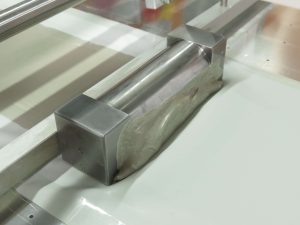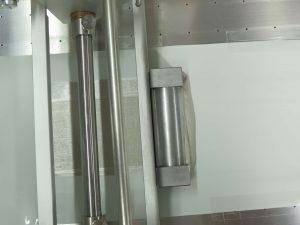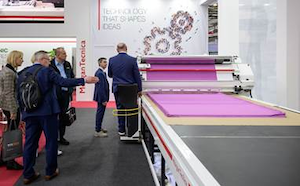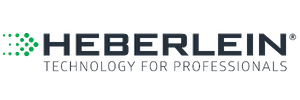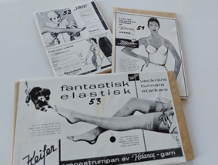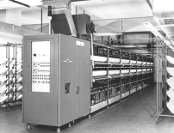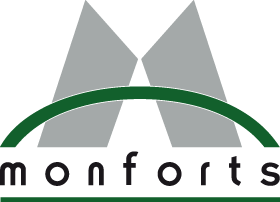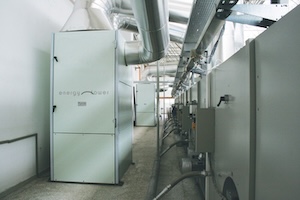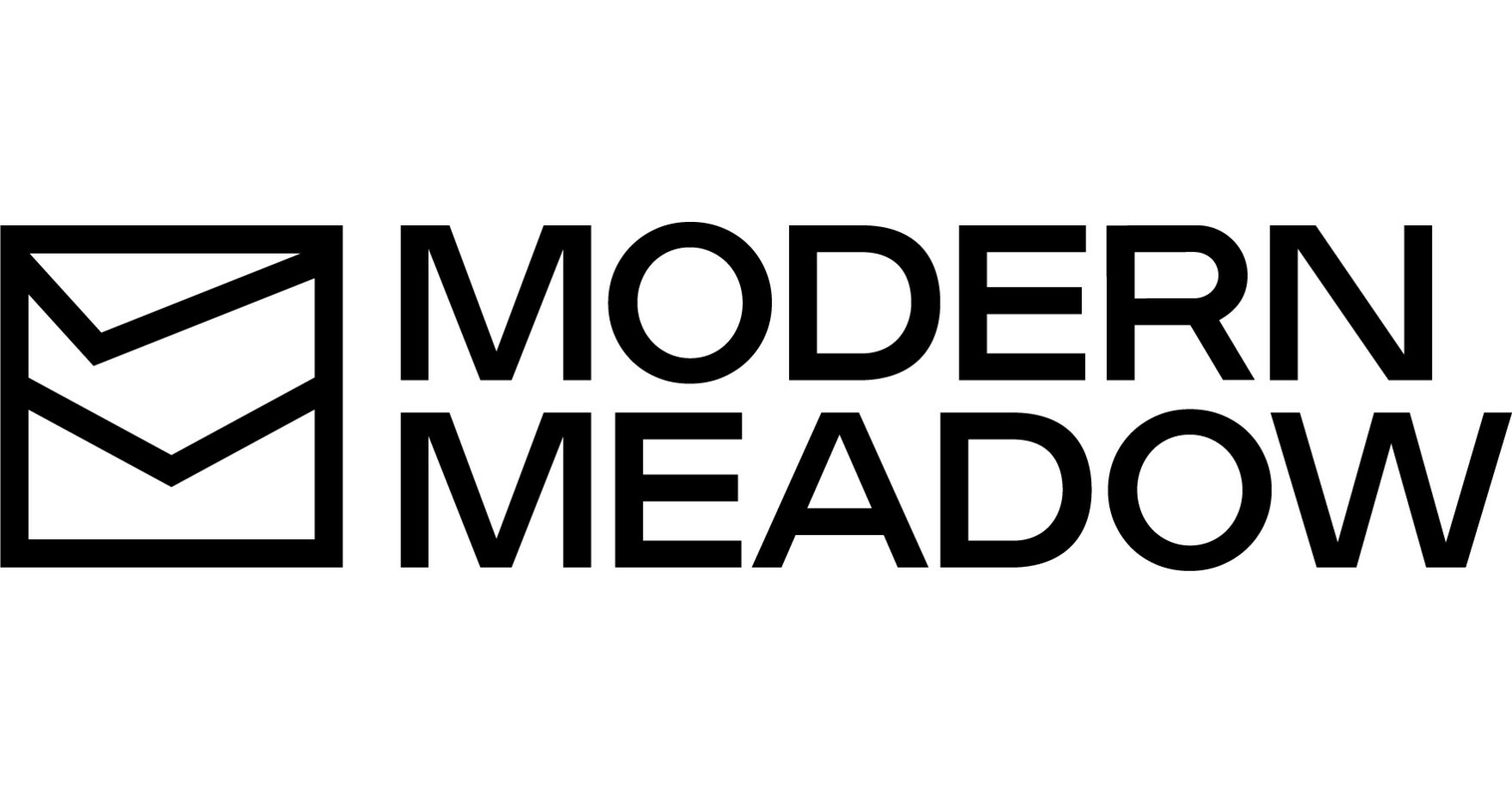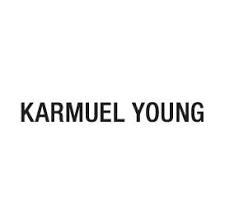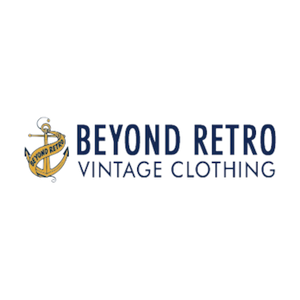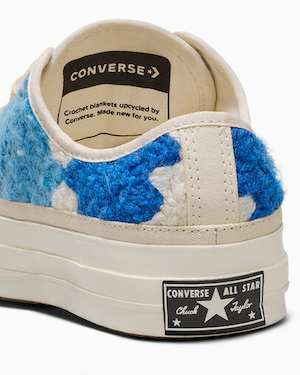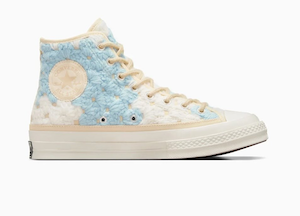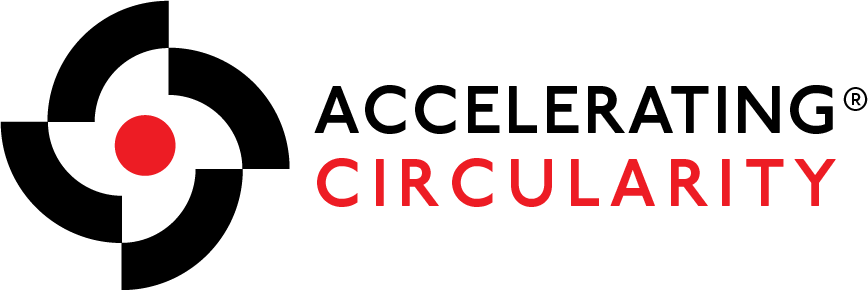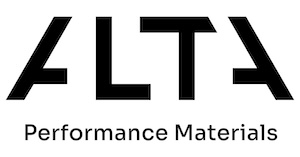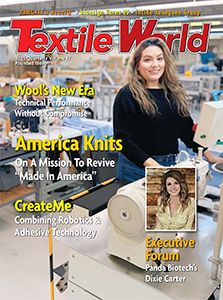 TEMPE, Ariz. — April 1, 2025 — Economic activity in the manufacturing sector contracted in March after two consecutive months of expansion preceded by 26 straight months of contraction, say the nation’s supply executives in the latest Manufacturing ISM® Report On Business®.
TEMPE, Ariz. — April 1, 2025 — Economic activity in the manufacturing sector contracted in March after two consecutive months of expansion preceded by 26 straight months of contraction, say the nation’s supply executives in the latest Manufacturing ISM® Report On Business®.
The report was issued today by Timothy R. Fiore, CPSM, C.P.M., chair of the Institute for Supply Management® (ISM®) Manufacturing Business Survey Committee:
“The Manufacturing PMI® registered 49 percent in March, 1.3 percentage points lower compared to the 50.3 percent recorded in February. The overall economy continued in expansion for the 59th month after one month of contraction in April 2020. (A Manufacturing PMI above 42.3 percent, over a period of time, generally indicates an expansion of the overall economy.) The New Orders Index contracted for the second month in a row following a three-month period of expansion; the figure of 45.2 percent is 3.4 percentage points lower than the 48.6 percent recorded in February. The March reading of the Production Index (48.3 percent) is 2.4 percentage points lower than February’s figure of 50.7 percent. The index dropped back into contraction after two months of expansion, with eight months of contraction before that. The Prices Index surged further into expansion (or ‘increasing’) territory, registering 69.4 percent, up 7 percentage points compared to the reading of 62.4 percent in February. The Backlog of Orders Index registered 44.5 percent, down 2.3 percentage points compared to the 46.8 percent recorded in February. The Employment Index registered 44.7 percent, down 2.9 percentage points from February’s figure of 47.6 percent.
“The Supplier Deliveries Index indicated a continued slowing of deliveries (though at a slightly slower rate of change), registering 53.5 percent, 1 percentage point lower than the 54.5 percent recorded in February. (Supplier Deliveries is the only ISM® Report On Business index that is inversed; a reading of above 50 percent indicates slower deliveries, which is typical as the economy improves and customer demand increases.) The Inventories Index registered 53.4 percent, up 3.5 percentage points compared to February’s reading of 49.9 percent. The index returned to expansion after six months of contraction.
“The New Export Orders Index reading of 49.6 percent is 1.8 percentage points lower than the reading of 51.4 percent registered in February. The Imports Index continued in expansion in March, though just barely, registering 50.1 percent, 2.5 percentage points lower than February’s reading of 52.6 percent.”
Fiore continues, “In March, U.S. manufacturing activity slipped into contraction after expanding only marginally in February. The expansion in both February and January followed 26 consecutive months of contraction. Demand and output weakened while input strengthened further, a negative for economic growth. Indications that demand weakened include: the (1) New Orders Index falling further into contraction territory, (2) New Export Orders Index dropping into contraction, (3) Backlog of Orders Index contracting at a faster rate, and (4) Customers’ Inventories Index remaining in ‘too low’ territory.
Output (measured by the Production and Employment indexes) also weakened. Factory output (production) contracted in March, indicating that panelists’ companies are revising production plans downward in the face of economic headwinds. The Employment Index moved deeper into contraction, as panelists’ companies continued to release workers. Companies continued to cite ‘attriting down’ as the best process, as opposed to layoffs.
Inputs — defined as supplier deliveries, inventories, prices and imports — expanded. All four indexes indicated expansion, which is not a positive sign when demand is moving in the opposite direction. Inventories growth is a temporary move to avoid tariffs and will decline when such trade issues are resolved.
“Demand and production retreated and destaffing continued, as panelists’ companies responded to demand confusion. Prices growth accelerated due to tariffs, causing new order placement backlogs, supplier delivery slowdowns and manufacturing inventory growth. Forty-six percent of manufacturing gross domestic product (GDP) contracted in March, up from 24 percent in February. The share of manufacturing sector GDP registering a composite PMI calculation at or below 45 percent (a good barometer of overall manufacturing weakness) was 7 percent in March, a 5-percentage point increase compared to the 2 percent reported in February. Of the six largest manufacturing industries, three (Petroleum & Coal Products; Computer & Electronic Products; and Transportation Equipment) expanded in March, one fewer than in February,” says Fiore.
The nine manufacturing industries reporting growth in March — listed in order — are: Textile Mills; Petroleum & Coal Products; Fabricated Metal Products; Primary Metals; Computer & Electronic Products; Nonmetallic Mineral Products; Transportation Equipment; Electrical Equipment, Appliances & Components; and Miscellaneous Manufacturing. The seven industries reporting contraction in March, in order, are: Wood Products; Paper Products; Plastics & Rubber Products; Furniture & Related Products; Chemical Products; Food, Beverage & Tobacco Products; and Machinery.
What Respondents Are Saying
- “Complex markets saw a surge in volume buying in anticipation of 2025 being slightly better than 2024. In March, however, all markets saw a slowdown, with fear and inventory stocking to hold through a potential crisis.” [Chemical Products]
- “Acute shortages continue to impact supply chain continuity. Chinese restrictions on critical minerals such as germanium have caused major shortages, resulting in all supply needed in 2025 already assumed — and, not surprisingly, significant price increases as a result. Tariffs are causing minor ripples at the moment in securing supply, with purchase order terms narrowing due to uncertainties. A&D (aerospace and defense), which has been very resilient, is starting to see questionable medium- to long-term demand due to governmental policy, including retaliatory actions taken by foreign countries with foreign military sales.” [Transportation Equipment]
- “Customers are pulling in orders due to anxiety about continued tariffs and pricing pressures.” [Computer & Electronic Products]
- “Starting to see slower-than-normal sales in Canada, and concerns of Canadians boycotting U.S. products could become a reality.” [Food, Beverage & Tobacco Products]
- “Business condition is deteriorating at a fast pace. Tariffs and economic uncertainty are making the current business environment challenging.” [Machinery]
- “New order levels have increased and are better than expected. We suspect that our customers are trying to build inventory at current prices to get ahead of expected tariff and related cost increases. We expect this surge in demand to be short-lived.” [Fabricated Metal Products]
- “Demand has been stable, consistent with last year. No evidence of growing demand. Tariff impacts and mitigation strategies are a daily conversation.” [Electrical Equipment, Appliances & Components]
- “Newly implemented tariffs are significantly impacting gross profits. Canada’s new tariffs on U.S. goods are significantly impacting orders from that country. Quotes and sales are lower from Europe due to the threat of retaliatory tariffs.” [Miscellaneous Manufacturing]
- “Worldwide economic instability has really begun to impact our oil and gas business. Aside from the change in the U.S. administration, the economies of China, India and Europe are drivers in what we believe is the next cyclical trough.” [Petroleum & Coal Products]
- “Bearish market sentiment and tariff applications and costs have dominated discussions over the past month and should continue to dominate markets until a clear path forward is determined. Overall concern is whether or not demand destruction will occur with higher pricing.” [Primary Metals]
MANUFACTURING AT A GLANCE
March 2025 |
| Index |
Series
IndexMar |
Series
IndexFeb |
Percentage
Point
Change |
Direction |
Rate of
Change |
Trend*
(Months) |
| Manufacturing PMI® |
49.0 |
50.3 |
-1.3 |
Contracting |
From Growing |
1 |
| New Orders |
45.2 |
48.6 |
-3.4 |
Contracting |
Faster |
2 |
| Production |
48.3 |
50.7 |
-2.4 |
Contracting |
From Growing |
1 |
| Employment |
44.7 |
47.6 |
-2.9 |
Contracting |
Faster |
2 |
| Supplier Deliveries |
53.5 |
54.5 |
-1.0 |
Slowing |
Slower |
4 |
| Inventories |
53.4 |
49.9 |
+3.5 |
Growing |
From Contracting |
1 |
| Customers’ Inventories |
46.8 |
45.3 |
+1.5 |
Too Low |
Slower |
6 |
| Prices |
69.4 |
62.4 |
+7.0 |
Increasing |
Faster |
6 |
| Backlog of Orders |
44.5 |
46.8 |
-2.3 |
Contracting |
Faster |
30 |
| New Export Orders |
49.6 |
51.4 |
-1.8 |
Contracting |
From Growing |
1 |
| Imports |
50.1 |
52.6 |
-2.5 |
Growing |
Slower |
3 |
| OVERALL ECONOMY |
Growing |
Slower |
59 |
| Manufacturing Sector |
Contracting |
From Growing |
1 |
Manufacturing ISM® Report On Business® data is seasonally adjusted for the New Orders, Production, Employment and Inventories indexes.
*Number of months moving in current direction.
Commodities Reported Up/Down In Price And In Short Supply
Commodities Up in Price
Aluminum (16); Aluminum Products; Brass; Copper (2); Corrugate; Corrugated Boxes; Critical Minerals; Electrical Components (2); Electronic Components (2); Packaging; Paints & Adhesives; Plastic Resin (2); Polypropylene Resin (2); Steel (2); Steel — Carbon (2); Steel — Cold Rolled; Steel — Hot Rolled (2); Steel — Scrap (3); Steel — Stainless; and Steel Products.
Commodities Down in Price
Industrial Alcohols; and Natural Gas.
Commodities in Short Supply
Cable Assemblies; Critical Minerals; Electrical Components (54); and Electronic Components.
Note: The number of consecutive months the commodity is listed is indicated after each item.
March 2025 Manufacturing Index Summaries
Manufacturing PMI®
The U.S. manufacturing sector contracted in March after two consecutive months of expansion preceded by 26 months of contraction, as the Manufacturing PMI registered 49 percent, 1.3 percentage points lower compared to the 50.3 percent reported in February. “In March, the Manufacturing PMI reversed its recent momentum to register below its reading in December. Of the five subindexes that directly factor into the Manufacturing PMI, two (Supplier Deliveries and Inventories) were in expansion territory, the same number as in February, when Production and Supplier Deliveries indicated growth. Slower supplier deliveries and expanded inventories in March are not considered positives for the economy: Both conditions figure to be temporary and are driven by tariff concerns, either delaying buyer/seller negotiations or advancing material deliveries that will be reversed after tariffs are deployed, leading to a drawdown of manufacturing inventory. Both the Employment and New Orders indexes moved further into contraction in March. Of the six biggest manufacturing industries, three (Petroleum & Coal Products; Computer & Electronic Products; and Transportation Equipment) registered growth,” says Fiore. A reading above 50 percent indicates that the manufacturing sector is generally expanding; below 50 percent indicates that it is generally contracting.
A Manufacturing PMI above 42.3 percent, over a period of time, generally indicates an expansion of the overall economy. Therefore, the March Manufacturing PMI indicates the overall economy grew for the 59th straight month after last contracting in April 2020. “The past relationship between the Manufacturing PMI and the overall economy indicates that the March reading (49 percent) corresponds to a change of plus-1.9 percent in real gross domestic product (GDP) on an annualized basis,” says Fiore.
The Last 12 Months
| Month |
Manufacturing
PMI® |
Month |
Manufacturing
PMI® |
| Mar 2025 |
49.0 |
Sep 2024 |
47.5 |
| Feb 2025 |
50.3 |
Aug 2024 |
47.5 |
| Jan 2025 |
50.9 |
Jul 2024 |
47.0 |
| Dec 2024 |
49.2 |
Jun 2024 |
48.3 |
| Nov 2024 |
48.4 |
May 2024 |
48.5 |
| Oct 2024 |
46.9 |
Apr 2024 |
48.8 |
| Average for 12 months – 48.5
High – 50.9
Low – 46.9 |
New Orders
ISM’s New Orders Index contracted in March for the second consecutive month after three consecutive months of expansion, registering 45.2 percent, a decrease of 3.4 percentage points compared to February’s figure of 48.6 percent. This is the lowest reading since May 2023 (43.4 percent) for the New Orders Index, which hasn’t indicated consistent growth since a 24-month streak of expansion ended in May 2022. “Of the six largest manufacturing sectors, two (Petroleum & Coal Products; and Food, Beverage & Tobacco Products) reported increased new orders. Three (Machinery; Transportation Equipment; and Chemical Products) reported declines. Panelists noted a weakening level of demand performance, with a 1-to-2 ratio of positive comments versus those expressing concern about near-term demand, a clear decline from February. Orders continue to slow, as discussions about who will pay for potential tariff costs are the prime topic of negotiations between buyers and sellers,” says Fiore. A New Orders Index above 52.1 percent, over time, is generally consistent with an increase in the Census Bureau’s series on manufacturing orders (in constant 2000 dollars).
The six manufacturing industries that reported growth in new orders in March, in order, are: Textile Mills; Petroleum & Coal Products; Nonmetallic Mineral Products; Fabricated Metal Products; Food, Beverage & Tobacco Products; and Primary Metals. The eight industries reporting a decline in new orders in March, in order, are: Paper Products; Wood Products; Furniture & Related Products; Plastics & Rubber Products; Machinery; Electrical Equipment, Appliances & Components; Transportation Equipment; and Chemical Products.
| New Orders |
%Higher |
%Same |
%Lower |
Net |
Index |
| Mar 2025 |
19.9 |
56.8 |
23.3 |
-3.4 |
45.2 |
| Feb 2025 |
20.3 |
62.4 |
17.3 |
+3.0 |
48.6 |
| Jan 2025 |
26.3 |
53.7 |
20.0 |
+6.3 |
55.1 |
| Dec 2024 |
21.0 |
54.9 |
24.1 |
-3.1 |
52.1 |
Production
The Production Index dropped into contraction territory in March after two consecutive months of expansion, registering 48.3 percent, 2.4 percentage points lower than the February reading of 50.7 percent. Prior to January’s reading, the index was in contraction territory for eight consecutive months, with the last reading above 50 percent in April 2024 (50.7 percent). Of the six largest manufacturing sectors, two (Computer & Electronic Products; and Transportation Equipment) reported increased production. “Production levels in March showed a marked decrease for the first time in 2025, as order books remain weak and new orders continue to decline, causing head-count reductions and lack of capital investment,” says Fiore. An index above 52.1 percent, over time, is generally consistent with an increase in the Federal Reserve Board’s Industrial Production figures.
The five industries reporting growth in production during the month of March are: Textile Mills; Fabricated Metal Products; Computer & Electronic Products; Transportation Equipment; and Primary Metals. The nine industries reporting a decrease in production in March, in order, are: Paper Products; Furniture & Related Products; Wood Products; Food, Beverage & Tobacco Products; Plastics & Rubber Products; Miscellaneous Manufacturing; Electrical Equipment, Appliances & Components; Machinery; and Chemical Products.
| Production |
%Higher |
%Same |
%Lower |
Net |
Index |
| Mar 2025 |
21.0 |
58.1 |
20.9 |
+0.1 |
48.3 |
| Feb 2025 |
16.5 |
68.9 |
14.6 |
+1.9 |
50.7 |
| Jan 2025 |
19.4 |
62.1 |
18.5 |
+0.9 |
52.5 |
| Dec 2024 |
15.3 |
59.3 |
25.4 |
-10.1 |
49.9 |
Employment
ISM’s Employment Index registered 44.7 percent in March, 2.9 percentage points lower than February’s reading of 47.6 percent. “The index posted its second consecutive month of contraction after expanding in January, with seven straight months of contraction before that. Since May 2022, the Employment Index has contracted in 28 of 35 months. Of the six big manufacturing sectors, none expanded employment in March. Respondents’ companies continue to reduce head counts through layoffs, attrition and hiring freezes, with an approximate 1-to-1.3 ratio of hiring versus staff-reduction comments, supporting an acceleration of head-count reductions due to the uncertain near- to mid-term demand. Freezing and attrition were the primary tools used for the second straight month, in lieu of the more dramatic and costly layoff process,” says Fiore. An Employment Index above 50.3 percent, over time, is generally consistent with an increase in the Bureau of Labor Statistics (BLS) data on manufacturing employment.
Of the 18 manufacturing industries, the only industry reporting employment growth in March is Primary Metals. The seven industries reporting a decrease in employment in March, in the following order, are: Wood Products; Textile Mills; Chemical Products; Fabricated Metal Products; Food, Beverage & Tobacco Products; Transportation Equipment; and Computer & Electronic Products. Nine industries reported no change in employment in March as compared to February.
| Employment |
%Higher |
%Same |
%Lower |
Net |
Index |
| Mar 2025 |
8.3 |
73.7 |
18.0 |
-9.7 |
44.7 |
| Feb 2025 |
12.0 |
70.9 |
17.1 |
-5.1 |
47.6 |
| Jan 2025 |
11.7 |
75.1 |
13.2 |
-1.5 |
50.3 |
| Dec 2024 |
7.0 |
75.3 |
17.7 |
-10.7 |
45.4 |
Supplier Deliveries†
Delivery performance of suppliers to manufacturing organizations was slower in March, with the Supplier Deliveries Index registering 53.5 percent, a 1-percentage point decrease compared to the reading of 54.5 percent reported in February. This continued expansion follows a contraction (which indicates faster delivery performance) in November, preceded by four consecutive months of slower deliveries, with four straight months of faster deliveries before that. After a reading of 52.4 percent in September 2022, the index went into contraction territory the following month and remained there for 20 out of 21 months, with February 2024 the exception. Of the six big industries, five (Petroleum & Coal Products; Chemical Products; Transportation Equipment; Machinery; and Computer & Electronic Products) reported slower supplier deliveries in March. “Deliveries continued to be marginally strained as suppliers struggled to meet accelerated delivery requests from customers and as suppliers and panelists’ companies negotiate who pays for current tariffs,” says Fiore. A reading below 50 percent indicates faster deliveries, while a reading above 50 percent indicates slower deliveries.
The 11 manufacturing industries reporting slower supplier deliveries in March — in the following order — are: Petroleum & Coal Products; Textile Mills; Nonmetallic Mineral Products; Furniture & Related Products; Electrical Equipment, Appliances & Components; Chemical Products; Primary Metals; Transportation Equipment; Miscellaneous Manufacturing; Machinery; and Computer & Electronic Products. The two industries reporting faster supplier deliveries in March are: Plastics & Rubber Products; and Food, Beverage & Tobacco Products.
| Supplier Deliveries |
%Slower |
%Same |
%Faster |
Net |
Index |
| Mar 2025 |
13.4 |
80.2 |
6.4 |
+7.0 |
53.5 |
| Feb 2025 |
14.9 |
79.1 |
6.0 |
+8.9 |
54.5 |
| Jan 2025 |
7.8 |
86.2 |
6.0 |
+1.8 |
50.9 |
| Dec 2024 |
6.4 |
87.4 |
6.2 |
+0.2 |
50.1 |
Inventories
The Inventories Index registered 53.4 percent in March, up 3.5 percentage points compared to the reading of 49.9 percent reported in February. The Inventories Index has gained 7.5 percentage points the last two months to reach its highest level since October 2022, when it also registered 53.4 percent. The last time the Inventories Index was above 50 percent was in August (50.2 percent). Of the six big industries, five (Petroleum & Coal Products; Computer & Electronic Products; Transportation Equipment; Food, Beverage & Tobacco Products; and Machinery) grew input inventories in March. “Manufacturing inventories expanded in March, as panelists’ companies continue to pull forward (advance) deliveries of materials in an attempt to minimize the financial impacts of potential tariffs,” says Fiore. An Inventories Index greater than 44.5 percent, over time, is generally consistent with expansion in the Bureau of Economic Analysis (BEA) figures on overall manufacturing inventories (in chained 2000 dollars).
Of 18 manufacturing industries, the 12 industries reporting higher inventories in March — listed in order — are: Petroleum & Coal Products; Textile Mills; Furniture & Related Products; Miscellaneous Manufacturing; Paper Products; Electrical Equipment, Appliances & Components; Computer & Electronic Products; Transportation Equipment; Primary Metals; Fabricated Metal Products; Food, Beverage & Tobacco Products; and Machinery. The three industries reporting lower inventories in March are: Wood Products; Plastics & Rubber Products; and Nonmetallic Mineral Products.
| Inventories |
%Higher |
%Same |
%Lower |
Net |
Index |
| Mar 2025 |
21.5 |
65.7 |
12.8 |
+8.7 |
53.4 |
| Feb 2025 |
14.6 |
72.4 |
13.0 |
+1.6 |
49.9 |
| Jan 2025 |
12.2 |
67.4 |
20.4 |
-8.2 |
45.9 |
| Dec 2024 |
14.4 |
64.8 |
20.8 |
-6.4 |
48.4 |
Customers’ Inventories†
ISM’s Customers’ Inventories Index registered a reading of 46.8 percent in March, an increase of 1.5 percentage points compared to the reading of 45.3 percent in February. “Customers’ inventory levels in March continued to contract, but moved closer to ‘about right’ territory. (For more information about the Customers’ Inventories Index, see the “Data and Method of Presentation” section below.) Panelists are reporting that the amounts of their companies’ products in their customers’ inventories suggest a demand level that remains positive for future production,” says Fiore.
The seven industries reporting customers’ inventories as too high in March — in the following order — are: Furniture & Related Products; Paper Products; Wood Products; Miscellaneous Manufacturing; Electrical Equipment, Appliances & Components; Machinery; and Plastics & Rubber Products. The eight industries reporting customers’ inventories as too low in March, in order, are: Textile Mills; Nonmetallic Mineral Products; Primary Metals; Chemical Products; Fabricated Metal Products; Food, Beverage & Tobacco Products; Computer & Electronic Products; and Transportation Equipment.
Customers’
Inventories |
%
Reporting |
%Too
High |
%About
Right |
%Too
Low |
Net |
Index |
| Mar 2025 |
77 |
11.8 |
70.0 |
18.2 |
-6.4 |
46.8 |
| Feb 2025 |
77 |
8.0 |
74.6 |
17.4 |
-9.4 |
45.3 |
| Jan 2025 |
77 |
9.0 |
75.4 |
15.6 |
-6.6 |
46.7 |
| Dec 2024 |
78 |
11.5 |
70.3 |
18.2 |
-6.7 |
46.7 |
Prices†
The ISM Prices Index registered 69.4 percent in March, elevating 7 percentage points compared to the February reading of 62.4 percent, indicating raw materials prices increased for the sixth straight month after a decrease in September. The Prices Index has increased 21.1 percentage points over the past six months to record its highest reading since June 2022 (78.5 percent). Of the six largest manufacturing industries, five — Transportation Equipment; Machinery; Chemical Products; Food, Beverage & Tobacco Products; and Computer & Electronic Products — reported price increases in March. “The Prices Index indicated increasing prices in March for the sixth consecutive month, driven by dramatic increases in steel and aluminum prices as a result of recently deployed tariffs. Corrugate, copper and plastic resins have all experienced price growth as companies move to minimize their exposure to foreign-made goods, causing domestic prices to rise amid new demand. Forty-six percent of companies reported higher prices in March, compared to 31 percent in February. This share has consistently increased over the past five months, from a low of 12.2 percent in November,” says Fiore. A Prices Index above 52.8 percent, over time, is generally consistent with an increase in the Bureau of Labor Statistics (BLS) Producer Price Index for Intermediate Materials.
In March, the 15 industries that reported paying increased prices for raw materials, in order, are: Nonmetallic Mineral Products; Textile Mills; Electrical Equipment, Appliances & Components; Fabricated Metal Products; Primary Metals; Plastics & Rubber Products; Paper Products; Miscellaneous Manufacturing; Transportation Equipment; Wood Products; Machinery; Chemical Products; Food, Beverage & Tobacco Products; Furniture & Related Products; and Computer & Electronic Products. No industries reported paying decreased prices for raw materials in March.
|
Prices |
%Higher |
%Same |
%Lower |
Net |
Index |
| Mar 2025 |
46.0 |
46.7 |
7.3 |
+38.7 |
69.4 |
| Feb 2025 |
31.4 |
61.9 |
6.7 |
+24.7 |
62.4 |
| Jan 2025 |
20.7 |
68.3 |
11.0 |
+9.7 |
54.9 |
| Dec 2024 |
14.4 |
76.1 |
9.5 |
+4.9 |
52.5 |
Backlog of Orders†
ISM’s Backlog of Orders Index registered 44.5 percent, a decrease of 2.3 percentage points compared to the February reading of 46.8 percent, indicating order backlogs contracted for the 30th consecutive month after a 27-month period of expansion. Of the six largest manufacturing industries, only one (Food, Beverage & Tobacco Products) reported expanded order backlogs in March. “Given the state of weak new orders and consistent production output, the hoped-for return of expanding backlogs has been deferred until trade issues and other geopolitical tensions recede,” says Fiore.
Of the 18 manufacturing industries, only two reported growth in order backlogs in March: Fabricated Metal Products; and Food, Beverage & Tobacco Products. The 10 industries reporting lower backlogs in March — in the following order — are: Wood Products; Paper Products; Plastics & Rubber Products; Primary Metals; Nonmetallic Mineral Products; Chemical Products; Computer & Electronic Products; Machinery; Miscellaneous Manufacturing; and Transportation Equipment.
Backlog of
Orders |
%
Reporting |
%Higher |
%Same |
%Lower |
Net |
Index |
| Mar 2025 |
91 |
15.4 |
58.2 |
26.4 |
-11.0 |
44.5 |
| Feb 2025 |
92 |
14.0 |
65.5 |
20.5 |
-6.5 |
46.8 |
| Jan 2025 |
93 |
12.6 |
64.6 |
22.8 |
-10.2 |
44.9 |
| Dec 2024 |
91 |
14.9 |
62.0 |
23.1 |
-8.2 |
45.9 |
New Export Orders†
ISM’s New Export Orders Index contracted in March after expanding for two consecutive months, registering 49.6 percent in March, down 1.8 percentage points from February’s reading of 51.4 percent. “The New Export Orders Index reading indicates that export orders reversed course after growing in February for a second consecutive month. This brief period of expansion followed an ‘unchanged’ status (a reading of 50 percent), preceded by six straight months of contraction. New export orders contracted as panelists’ comments cited Canadians’ lack of desire to purchase U.S. goods due to the friction between the countries,” says Fiore.
The five industries reporting growth in new export orders in March are: Paper Products; Textile Mills; Computer & Electronic Products; Transportation Equipment; and Machinery. The seven industries reporting a decrease in new export orders in March — in the following order — are: Furniture & Related Products; Primary Metals; Plastics & Rubber Products; Electrical Equipment, Appliances & Components; Miscellaneous Manufacturing; Chemical Products; and Fabricated Metal Products.
New Export
Orders |
%
Reporting |
%Higher |
%Same |
%Lower |
Net |
Index |
| Mar 2025 |
73 |
12.1 |
74.9 |
13.0 |
-0.9 |
49.6 |
| Feb 2025 |
73 |
12.9 |
77.0 |
10.1 |
+2.8 |
51.4 |
| Jan 2025 |
74 |
12.0 |
80.8 |
7.2 |
+4.8 |
52.4 |
| Dec 2024 |
74 |
10.9 |
78.2 |
10.9 |
0.0 |
50.0 |
Imports†
ISM’s Imports Index showed growth for the third straight month in March, with a reading of 50.1 percent indicating marginal expansion, 2.5 percentage points lower than the reading of 52.6 percent reported in February. Before expanding in January, the index contracted for seven months in a row, preceded by five consecutive months of expansion, with 14 straight months of contraction prior to that. “Imports remained in expansion as buyers try to get ahead of tariffs by pulling forward future deliveries to the extent that is possible,” says Fiore.
The five industries reporting an increase in import volumes in March are: Textile Mills; Fabricated Metal Products; Food, Beverage & Tobacco Products; Computer & Electronic Products; and Transportation Equipment. The eight industries that reported lower volumes of imports in March — in the following order — are: Petroleum & Coal Products; Furniture & Related Products; Wood Products; Primary Metals; Miscellaneous Manufacturing; Electrical Equipment, Appliances & Components; Chemical Products; and Machinery.
| Imports |
%
Reporting |
%Higher |
%Same |
%Lower |
Net |
Index |
| Mar 2025 |
86 |
16.5 |
67.1 |
16.4 |
+0.1 |
50.1 |
| Feb 2025 |
85 |
16.4 |
72.3 |
11.3 |
+5.1 |
52.6 |
| Jan 2025 |
85 |
11.6 |
78.9 |
9.5 |
+2.1 |
51.1 |
| Dec 2024 |
85 |
12.8 |
73.8 |
13.4 |
-0.6 |
49.7 |
†The Supplier Deliveries, Customers’ Inventories, Prices, Backlog of Orders, New Export Orders, and Imports indexes do not meet the accepted criteria for seasonal adjustments.
Buying Policy
The average commitment lead time for Capital Expenditures in March was 165 days, a decrease of three days compared to February. The average lead time in March for Production Materials was 80 days, a decrease of five days compared to February. The average lead time for Maintenance, Repair and Operating (MRO) Supplies was 47 days, an increase of two days compared to February.
| Percent Reporting |
Capital
Expenditures |
Hand-to-
Mouth |
30 Days |
60 Days |
90 Days |
6 Months |
1 Year+ |
Average
Days |
| Mar 2025 |
17 |
3 |
10 |
15 |
30 |
25 |
165 |
| Feb 2025 |
17 |
4 |
9 |
14 |
30 |
26 |
168 |
| Jan 2025 |
17 |
4 |
8 |
15 |
30 |
26 |
168 |
| Dec 2024 |
14 |
5 |
8 |
15 |
30 |
28 |
175 |
| Percent Reporting |
|
Production
Materials |
Hand-to-
Mouth |
30 Days |
60 Days |
90 Days |
6 Months |
1 Year+ |
Average
Days |
|
| Mar 2025 |
8 |
24 |
27 |
28 |
9 |
4 |
80 |
|
| Feb 2025 |
8 |
22 |
28 |
28 |
8 |
6 |
85 |
|
| Jan 2025 |
6 |
25 |
29 |
26 |
9 |
5 |
83 |
|
| Dec 2024 |
7 |
25 |
28 |
27 |
8 |
5 |
81 |
|
| Percent Reporting |
| MRO Supplies |
Hand-to-
Mouth |
30 Days |
60 Days |
90 Days |
6 Months |
1 Year+ |
Average
Days |
| Mar 2025 |
30 |
33 |
20 |
10 |
6 |
1 |
47 |
| Feb 2025 |
29 |
37 |
16 |
13 |
4 |
1 |
45 |
| Jan 2025 |
29 |
34 |
19 |
11 |
6 |
1 |
47 |
| Dec 2024 |
30 |
35 |
16 |
13 |
5 |
1 |
46 |
Posted: April 1, 2025
Source: Institute for Supply Management
![]() WASHINGTON, D.C. — April 3, 2025 — The National Council of Textile Organizations (NCTO), representing the full spectrum of U.S. textiles from fiber, yarn and fabrics to finished sewn products, issued the following statement from President and CEO Kim Glas regarding President Trump’s reciprocal tariff plan.
WASHINGTON, D.C. — April 3, 2025 — The National Council of Textile Organizations (NCTO), representing the full spectrum of U.S. textiles from fiber, yarn and fabrics to finished sewn products, issued the following statement from President and CEO Kim Glas regarding President Trump’s reciprocal tariff plan.


